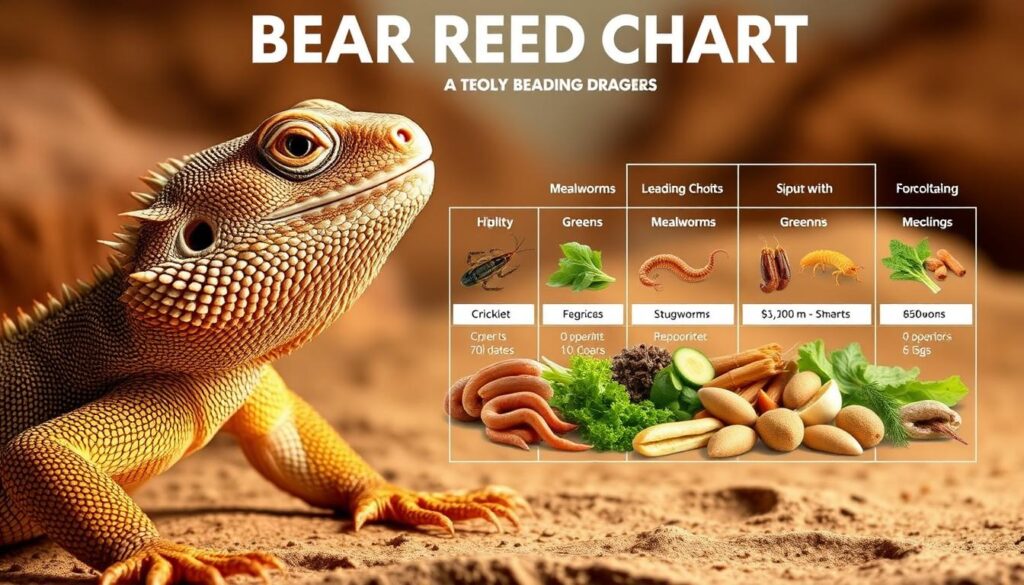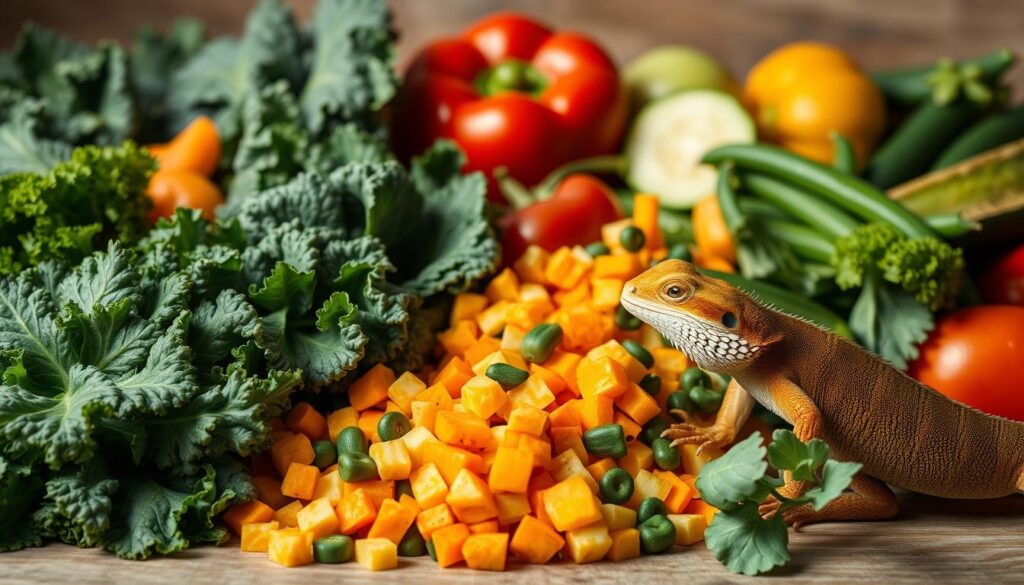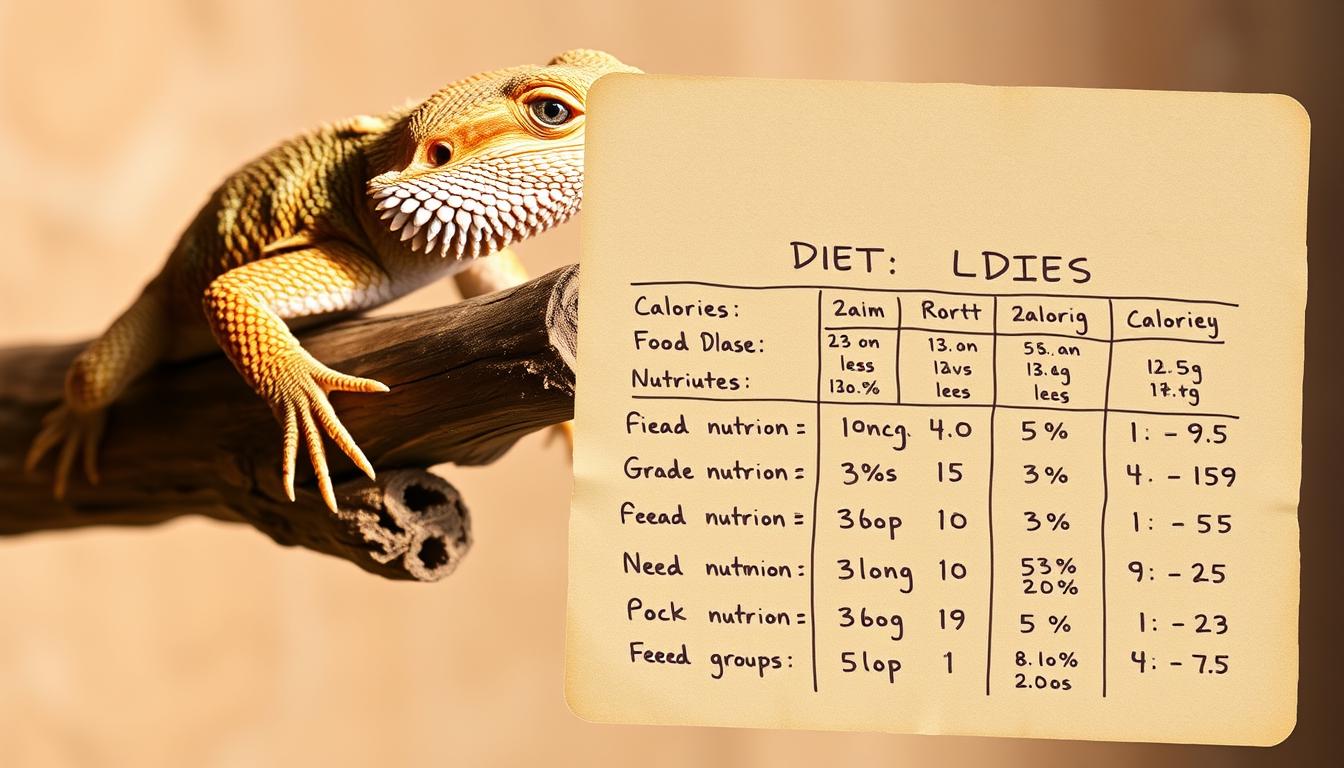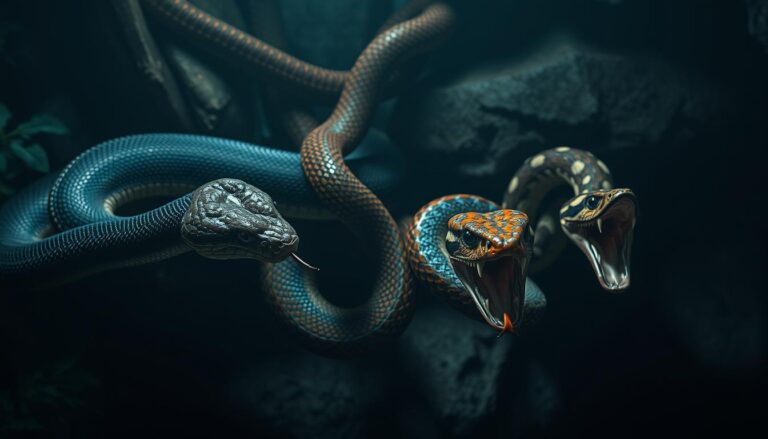Bearded Dragon Diet: The Char-ful Guide to Feeding
Discover the ultimate bearded dragon diet chart for a healthy pet. Learn what to feed your bearded dragon with our comprehensive guide.
Bearded dragons are fascinating reptiles native to the arid regions of Australia. Their unique dietary needs make them a rewarding yet challenging pet to care for. Whether in the wild or as domestic companions, these creatures require a carefully balanced diet to thrive.
In their natural habitat, bearded dragons consume a mix of insects, plants, and occasional fruits. However, domestic care often differs significantly. Juveniles need a diet rich in protein, with insects making up about 80% of their intake. As they mature, the ratio shifts, with adults requiring 80% plant-based foods.
Proper nutrition is crucial to prevent common health issues like obesity and metabolic bone disease. A regulated feeding schedule and calcium supplementation are essential components of their care. By following expert guidelines, owners can ensure their pets live long, healthy lives.
Key Takeaways
- Bearded dragons are desert-adapted reptiles with specialized dietary needs.
- Juveniles require 80% insects, while adults thrive on 80% plant-based foods.
- A balanced diet includes insects, vegetables, and occasional fruits.
- Obesity prevention is critical through controlled feeding schedules.
- Calcium supplementation helps prevent metabolic bone disease.
- Authoritative feeding charts provide age-specific protein and plant ratios.
- Reptile care best practices and veterinary recommendations ensure optimal health.
Understanding the Bearded Dragon Diet
Proper nutrition plays a vital role in the health of these unique pets. Their dietary needs differ significantly between their natural habitat and domestic environments. Knowing what they eat in the wild and how to adjust their diet in captivity is essential for their well-being.
What Do Bearded Dragons Eat in the Wild?
In the wild, these reptiles consume a mix of insects and plants. Their diet consists of approximately 70% insects and 30% plants, with occasional seasonal flowers. Common protein sources include grasshoppers, beetles, and even small lizards found in the Australian ecosystem.
This balanced intake ensures they receive the nutrients needed to survive in arid conditions. However, their domestic diet requires careful adjustments to mimic these natural habits.
Domesticated Bearded Dragons: Diet Adjustments
When kept as pets, their diet must be modified to prevent health issues like obesity. Adults thrive on a diet of 80% plant-based foods and 20% insects. Juveniles, on the other hand, need more protein, with insects making up 80% of their intake.
Key adjustments include:
- Reducing insect portions for adults to 20% to avoid overfeeding.
- Providing Vitamin D3 supplements to compensate for limited sunlight exposure.
- Controlling calorie intake due to reduced activity levels in captivity.
Owners should also ensure a smooth transition from juvenile to adult feeding regimens. Common mistakes include overfeeding insects and neglecting calcium dusting, which can lead to health complications.
Creating a Bearded Dragon Diet Chart
A well-structured feeding plan ensures these pets thrive in captivity. Properly balancing their meals is key to preventing common health issues like obesity and metabolic bone disease. A detailed diet chart helps owners meet their pet’s nutritional needs at every stage of life.

Balancing Insects, Vegetables, and Fruits
Their meals should include a mix of protein, greens, and occasional treats. Juveniles require more insects, while adults thrive on a plant-based diet. Here’s a breakdown of the ideal ratios:
- Juveniles: 80% insects, 20% veggies.
- Adults: 80% veggies, 20% insects.
- Fruits: Limited to 10-20% of plant intake, offered weekly as treats.
Introducing greens to juveniles can be challenging. Start by mixing small amounts of veggies with their favorite insects. Gradually increase the portion as they grow.
Feeding Frequency by Age
Their feeding schedule changes as they mature. Here’s a quick guide:
| Age | Feeding Frequency | Portion Size |
|---|---|---|
| Baby | 3 times a day | 60 insects/day |
| Juvenile | 2 times a day | 30-40 insects/day |
| Adult | Once a day | 8-10 roaches or equivalent |
Adjust portions based on activity levels and health. During brumation, reduce feeding frequency as their metabolism slows.
By following these guidelines, owners can ensure their pets receive the nutrients they need at every stage of life. A balanced diet and consistent feeding schedule are the foundation of their long-term health.
The Best Insects for Your Bearded Dragon
Choosing the right insects is essential for your pet’s health and vitality. These creatures provide the protein and nutrients needed for growth and energy. Understanding the nutritional value of each type ensures a balanced diet.
Crickets: A Protein-Rich Staple
Crickets are a popular choice due to their high protein content. They are easy to find and affordable, making them a staple for many pet owners. However, proper storage is crucial to prevent escapes. Secure containers and regular feeding schedules ensure their effectiveness.
Dubia Roaches: The Superior Feeder
Dubia roaches are a superior feeder option. They offer five times more nutrients than crickets and are quieter to keep. Their ease of containment and high protein content make them an excellent choice for pet owners seeking optimal nutrition.
Worms: Nutritious Treats
Worms, such as Phoenix and wax varieties, are nutritious treats. Phoenix worms are rich in calcium, while wax worms are high in fat. These should be offered sparingly to avoid overfeeding. Proper gut-loading with supplements ensures maximum nutritional benefits.
| Age | Recommended Feeder Size |
|---|---|
| Hatchlings | 1/4 inch |
| Juveniles | 1/2 inch |
| Adults | 1 inch |
Selecting the right size of feeders is crucial for your pet’s safety and health. Live insects stimulate natural hunting behaviors, while pre-killed options are convenient for busy owners. Bulk purchases of roaches can be cost-effective compared to frequent cricket buys.
Safe Vegetables for Bearded Dragons
Vegetables are a cornerstone of a healthy diet for many reptiles. They provide essential vitamins, minerals, and fiber that support overall well-being. For optimal health, it’s important to choose the right types and prepare them properly.

Leafy Greens: The Foundation of Their Diet
Leafy greens should form the base of their vegetable intake. These are rich in calcium and low in oxalates, making them ideal for daily consumption. Some of the best options include:
- Collard greens: High in calcium and vitamin A.
- Dandelion leaves: Packed with nutrients and easy to find.
- Endive: A great source of fiber and vitamins.
Rotate these greens throughout the week to provide variety and ensure balanced nutrition.
Other Vegetables to Include
In addition to leafy greens, other vegetables can add diversity to their meals. These should be offered in moderation and prepared correctly. Here’s a list of safe options:
| Vegetable | Feeding Frequency |
|---|---|
| Acorn squash | Weekly |
| Bell peppers | Weekly |
| Carrots | Weekly |
Make sure to chop vegetables into small, manageable pieces to prevent choking. Always wash them thoroughly, especially if they’re not organic.
Calcium-rich options like mustard greens and turnip greens are excellent choices. Prickly pear pads can also be included for added variety. However, avoid toxic vegetables such as avocado, rhubarb, and beet greens, as they can be harmful.
Presentation matters too. Arrange vegetables in creative ways, like flower shapes, to encourage eating. This not only makes meals more appealing but also stimulates natural foraging behaviors.
Fruits and Flowers: Occasional Treats
Incorporating fruits and flowers into a pet’s diet can add excitement and nutritional benefits. These treats should make up only 10-20% of their overall intake to avoid health issues. Offering them in moderation ensures a balanced diet while keeping meals interesting.
Safe Fruits for Pets
Certain fruits are safe and beneficial when prepared correctly. Blueberries, apples, and melons are excellent choices. Always peel and seed melons to prevent choking hazards. Citrus fruits should be avoided to prevent acid reflux.
Here’s a quick guide to safe fruits:
- Blueberries: Rich in antioxidants and easy to serve.
- Apples: Peeled and sliced into small pieces.
- Melons: Peeled, seeded, and cut into bite-sized chunks.
Flowers That Add Variety
Flowers can introduce variety and nutrients to meals. Hibiscus, nasturtiums, and rose petals are safe options. Always ensure flowers are pesticide-free and properly washed. Avoid toxic varieties like iris, tulip, and poinsettia.
Here’s a table summarizing safe fruits and flowers:
| Item | Preparation | Frequency |
|---|---|---|
| Blueberries | Whole or halved | 2x weekly |
| Apples | Peeled and sliced | 2x weekly |
| Hibiscus | Fresh and washed | 1x weekly |
| Rose petals | Fresh and washed | 1x weekly |
Keep in mind that treats should never replace staple foods. Moderation is key to maintaining a healthy diet and preventing issues like diabetes. Seasonal foraging can also provide safe, homegrown options for added variety.
Hydration and Supplements
Proper hydration and supplementation are critical for maintaining a reptile’s health. These elements ensure they receive the necessary nutrients and stay hydrated, which is especially important in captivity. Understanding the right methods and schedules can make a significant difference in their well-being.
Keeping Your Reptile Hydrated
Hydration is essential for reptiles, as it supports digestion and overall health. One effective method is misting their enclosure regularly. This mimics their natural environment and encourages them to drink droplets off leaves or surfaces.
Another approach is providing shallow baths. Fill a container with lukewarm water and let them soak for 10-15 minutes. This not only hydrates them but also aids in shedding. Always supervise baths to ensure safety.
Essential Supplements for Optimal Health
Supplements are vital for filling nutritional gaps in their diet. Calcium is particularly important for bone health and preventing metabolic bone disease. Dusting their food with a high-quality calcium powder, like Rep-Cal, ensures they receive adequate amounts.
Multivitamins should be given weekly to support overall health. These supplements provide essential vitamins and minerals that may be missing from their regular diet. Always follow the recommended dosage to avoid over-supplementation.
Here’s a quick guide to supplement schedules:
| Supplement | Frequency |
|---|---|
| Calcium Powder | Daily |
| Multivitamins | Weekly |
UVB lighting also plays a crucial role in calcium absorption. Ensure your pet has access to proper lighting to maximize the benefits of their supplements. Early signs of metabolic bone disease include lethargy and difficulty moving, so monitor their health closely.
For sick reptiles, liquid supplements like electrolyte solutions can help restore hydration and energy. Products like Reptile Greens & Calcium Powder are excellent choices for maintaining a balanced diet.
Feeding Tips for Different Life Stages
Feeding practices for reptiles vary significantly across different life stages, requiring tailored approaches for optimal health. Understanding these changes ensures proper growth and prevents common health issues. Here’s a breakdown of what to focus on at each stage.
Baby Reptiles: High Protein Needs
Young reptiles need a protein-rich diet to support rapid growth. Offer small insects like pinhead crickets or fruit flies three times daily. Avoid loose substrates, as they can pose ingestion risks. A daily intake of 60+ insects ensures they receive adequate nutrition.
Juvenile Reptiles: Transitioning to Greens
As they grow, gradually introduce veggies over six months. Start by mixing small amounts of greens with their favorite insects. This helps them adapt to a more balanced diet. Monitor their weight and length to ensure they’re meeting growth milestones.
Adult Reptiles: Maintaining a Balanced Diet
For adult reptiles, focus on portion control to prevent obesity. Reduce insect proportions and increase plant-based foods. Seasonal appetite fluctuations are normal, but sudden changes may indicate health issues. Senior reptiles may require further adjustments, such as reduced insect intake.
In multi-reptile households, use separate feeding enclosures to avoid competition. This ensures each pet receives the nutrients they need. By following these guidelines, owners can support their pets’ health at every life stage.
Ensuring a Healthy and Happy Bearded Dragon
Caring for a reptile requires attention to both physical and environmental needs. Regular health monitoring is essential. Keep track of weight logs and stool consistency to spot potential issues early.
Environmental factors play a key role. Make sure basking spot temperatures are optimal for your pet. This ensures they stay active and healthy. Annual veterinary checkups are also crucial for preventive care.
Behavioral enrichment, like foraging activities, keeps your pet mentally stimulated. Educate yourself on recognizing symptoms of impaction, a common issue in reptiles. Join reptile owner forums for community support and advice.
Continuous learning is vital. Subscribe to herpetological journals to stay updated on best practices. By focusing on these aspects, you can ensure your pet thrives every week.






